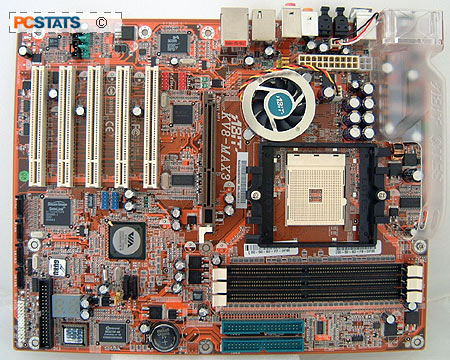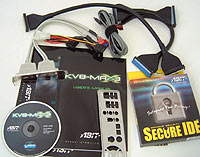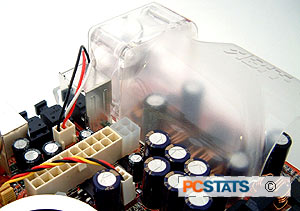ABIT KV8-MAX3 Athlon64 Motherboard Review
ABIT is a fan favorite of many computer enthusiasts, and has
been for a long time since the company began openly embracing overclocking. To further that agenda, ABIT have
introduced several enthusiast friendly features, designed to careful notch out a "performance oriented niche," and ensure market survival.
If you're thinking to yourself "I have no
interest in overclocking," that's okay, ABIT's motherboards are usually full of
features, and priced competitively to boot.
So what
exactly makes ABIT motherboards special?
It is dark magic, solid engineering, or a little bit of "The Force"
at allows overclockers to reach such lofty heights? No, the secret is in more practical
features, like a wider variety of voltage options, the onboard diagnostics, ABIT's µGuru technology, and good solid motherboard
layouts.
It's been
several months, and a few PR reps since PCstats last reviewed one of ABIT's
performance platforms, so today is of special note as we examine ABIT KV8-MAX3
motherboard.
 |
|
ABIT KV8-MAX3 Motherboard |
|
|

 |
| Includes: |
|
Users Manual, Quick Installation Guide,
Driver CD, SATA Driver Disk, Secure IDE Package, One Rounded
Ultra/133 IDE Cables, One Rounded Floppy Cable, Four Serial
ATA Cables, two Molex Y Serial ATA Power Cables, I/O Bracket,
ABIT Sticker, IEEE 1394/USB Bracket |
 | | |
 The KV8-MAX3 is an
Socket 754 Athlon64 motherboard based on the venerable, and highly recommendable
VIA K8T800 chipset.
The KV8-MAX3 is an
Socket 754 Athlon64 motherboard based on the venerable, and highly recommendable
VIA K8T800 chipset.
The KV8-MAX3 features a
standard assortment of features that you would expect to find on any number of
K8T800-based Athlon64 mainboards, including three DDR DIMM slots which can
accommodate up to 2GB of PC3200 memory. By limitation of the chipset, if all
three slots are occupied, PC2700 DDR is the highest speed memory
supported.
Other items to get excited
about on the ABIT KV8-MAX3 include an additional Silicon Image Serial ATA RAID
controller which has four headers, IEEE 1394a, 3Com GigABIT LAN, 5.1 audio, a
Port 80 diagnostics card, ABIT's µGuru technology, Secure IDE and of course the
unique OTES MOSFET cooling system.

